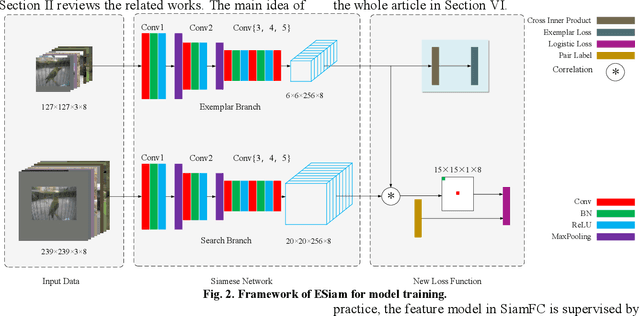Sai Huang
Channel-robust Automatic Modulation Classification Using Spectral Quotient Cumulants
Oct 12, 2023Abstract:Automatic modulation classification (AMC) is to identify the modulation format of the received signal corrupted by the channel effects and noise. Most existing works focus on the impact of noise while relatively little attention has been paid to the impact of channel effects. However, the instability posed by multipath fading channels leads to significant performance degradation. To mitigate the adverse effects of the multipath channel, we propose a channel-robust modulation classification framework named spectral quotient cumulant classification (SQCC) for orthogonal frequency division multiplexing (OFDM) systems. Specifically, we first transform the received signal to the spectral quotient (SQ) sequence by spectral circular shift division operations. Secondly, an outlier detector is proposed to filter the outliers in the SQ sequence. At last, we extract spectral quotient cumulants (SQCs) from the filtered SQ sequence as the inputs to train the artificial neural network (ANN) classifier and use the trained ANN to make the final decisions. Simulation results show that our proposed SQCC method exhibits classification robustness and superiority under various unknown Rician multipath fading channels compared with other existing methods. Specifically, the SQCC method achieves nearly 90% classification accuracy at the signal to noise ratio (SNR) of 4dB when testing under multiple channels but training under AWGN channel.
Exemplar Loss for Siamese Network in Visual Tracking
Jun 20, 2020



Abstract:Visual tracking plays an important role in perception system, which is a crucial part of intelligent transportation. Recently, Siamese network is a hot topic for visual tracking to estimate moving targets' trajectory, due to its superior accuracy and simple framework. In general, Siamese tracking algorithms, supervised by logistic loss and triplet loss, increase the value of inner product between exemplar template and positive sample while reduce the value of inner product with background sample. However, the distractors from different exemplars are not considered by mentioned loss functions, which limit the feature models' discrimination. In this paper, a new exemplar loss integrated with logistic loss is proposed to enhance the feature model's discrimination by reducing inner products among exemplars. Without the bells and whistles, the proposed algorithm outperforms the methods supervised by logistic loss or triplet loss. Numerical results suggest that the newly developed algorithm achieves comparable performance in public benchmarks.
 Add to Chrome
Add to Chrome Add to Firefox
Add to Firefox Add to Edge
Add to Edge